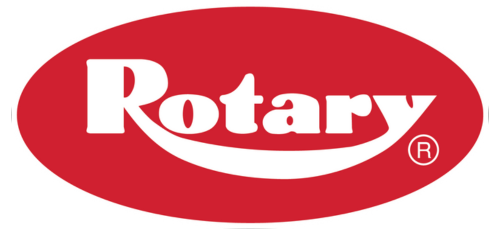
Every time a technician raises a vehicle for service on a lift, standard industry safety practices require that the lift be “lowered to locks” before starting work. To do this, the vehicle is raised to slightly above working height, and then lowered a bit until the lift locks engage. This process relieves the lift’s hydraulic pressure and places the load of the vehicle securely on mechanical safety latches. Doing so reduces the chance of the vehicle freefalling if the lift system fails.
The fixed operations director for Larry H. Miller Group, one of the largest auto dealership groups in the US, came to Rotary with an idea. They wanted a way to quickly verify, when a lift is under load, that it is resting on the locks. This was the conversation that spawned the invention of LockLight™. The LockLight device is approximately four inches square with a large light in the center. It is mounted to the lift or the control console (for light-duty inground lifts) and connected to the lift’s hydraulic system. When LockLight detects that the lift’s hydraulic pressure has been relieved, the light in the center turns green, indicating that the lift is on its locks and work can begin.
 Prior to the invention of LockLight, there was no way to quickly and easily tell if a lift was resting on the locks or under the hydraulic pressure. “If I’m a service manager, the only way I would know that hoist is on the safety locks would be to walk through the shop and check out every down lever on every hoist.”, said Dan Johnson.
Prior to the invention of LockLight, there was no way to quickly and easily tell if a lift was resting on the locks or under the hydraulic pressure. “If I’m a service manager, the only way I would know that hoist is on the safety locks would be to walk through the shop and check out every down lever on every hoist.”, said Dan Johnson.
Listening to your customers wants and needs then responding with viable solutions is a concept Rotary embraces. The partnership between Rotary and Larry H. Miller Group has drawn industry interest and was the topic of a Fixed Ops Journal article titled: Raising Lift Safety. The article goes in depth about the partnership of a company and its customers and how they can work together for the common good of the industry.
LockLight is just one example of how Rotary uses the feedback we receive from customers to create new ideas or improve on our existing designs. Many of Rotary’s most popular products have been influenced by our customers. Rotary may manufacturer the lifts, but its our customers who make a living on and under them.
{{cta(‘fa0d1760-a121-45f4-afd8-a22df625d1f1′,’justifycenter’)}}
